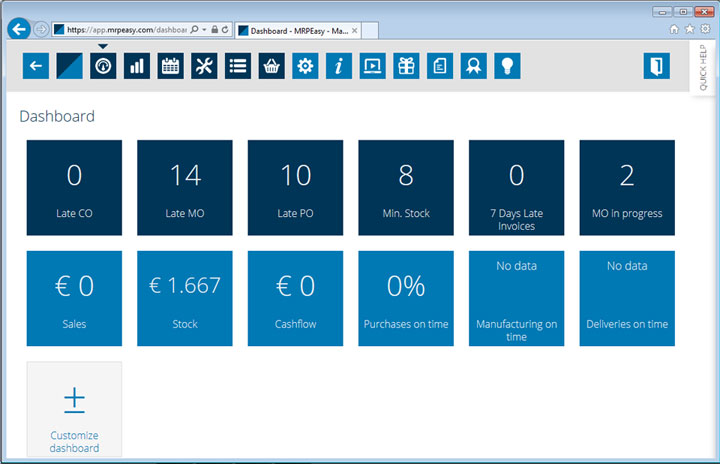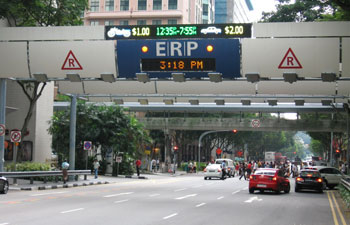Why manufacturing software is better than Excel?

With the rise of IT in our everyday lives comes the dependence on certain tools, to communicate, to assist and to help us with work. In the early days many companies – although slow to adopt – found a piece of software that worked for them, they invested in it and became reliant on it.
With the rise of IT in our personal and business lives comes the dependence on specific tools to communicate, assist, and, in some cases, to do our work. In the early days, many organizations were slow to adopt these tools, and once they found software that worked for them, they invested in it and became reliant on it.
There was not any particular type of software. Companies bought whatever was available back in the late nineties and into the early days of the millennium. Since they were happy and comfortable with their choice—or at least thought they were—they stayed with it. Unfortunately, that turned out to be a costly mistake since that so-called comfortable setup has been draining their time and resources.
By far, the most common culprit has been Excel. It became the go-to software for everything related to business management, with many small to medium-sized (SME) manufacturers using it as their primary manufacturing software solution. And while it might have worked well twenty years ago, today other options perform much better.
A brief history of SMEs and software
The reasons for the dependence on this generic piece of software for complex applications can be found in the earliest history of SMEs and software. In the seventies, SMEs were forced to use programs such as Excel as their manufacturing software solutions simply because they were priced out of the market for dedicated software.
Only the largest enterprises could reach that deep into their pockets, for both the software itself and the exorbitant prices for installation and management. Add to that the extra cost of labor to run, oversee, and maintain these systems meant that these specific solutions were simply out of reach for most smaller companies.
Fast forward to 2020
Developments in technology have enabled companies to take advantage of cloud-based services to overhaul their manufacturing software solutions. The accessibility of the software through the cloud eliminates the need for expensive servers and the army of staff required to service them, giving these companies a decided advantage over their competitors still using Excel.
However, there are still some management teams that are unable or unwilling to see past the mistaken notion that using Excel is a money-saving option. Nothing could be farther from the truth! Using Excel is costing them considerably more than a subscription to a cloud-based MRP solution.
Signs that your business has outgrown the capabilities of Excel
Many organizations work under the assumption that Excel is meeting their needs adequately, but the assumptions are usually wrong. Once they start analyzing whether or not their organization has outgrown the capacities of Excel, it isn’t long before they have an accurate picture and a different opinion. Here are some of the signs indicating that Excel is no longer meeting your company’s needs:
- The data you are collecting from different sources (employees, customers, and suppliers) is being saved on computers and devices that are not related to each other and are stored in various locations.
- Your employees have been spending more time collecting and organizing data than they are working with it.
- Lately, your company is seeing requirements that go beyond the basic demand-supply models. As a result, you have discovered that you are unable to respond efficiently to varying demand, changing market conditions, and business disruptions.
- You recognize the need for a system that offers integrated, live, real-time information that is accessible from any device, anywhere, and at any time.
- Right now, you have limited access to information from mobile devices, meaning you can view it but not edit it.
- Your current system cannot centralize and provide up-to-date information, which limits the activities of your staff, including your IT people.
- Excel is keeping you from taking your business to where you want it to be, based on pre-established KPIs.
Many organizations have been transitioning from Excel to more advanced ERP business applications that can be tailored to their unique business models. To help you understand why, here is a head-to-head comparison of the two solutions.
Excel vs. enterprise resource planning (ERP) solutions
Many companies continue to rely on Excel to run their businesses. It’s not hard to see why since Excel is easy to use, and employees are familiar with it. It is a very good business tool that allows them to store and manipulate data.
That being said, however, Excel is not nearly powerful enough for a busy manufacturing enterprise. There are too many issues with it, including security, accuracy, efficiency, and that all-important human error factor. With Excel, you have less control over data and information, which your business needs for its processes and that you rely on for your decision-making.
ERP systems, on the other hand, use relational databases that can provide so many benefits that include:
- A complete view of your operations in real-time
- Inventory control (lower inventory levels without stock-outs)
- Project management
- On-time deliveries
- Analyzing KPIs
- Automatic parts ordering
- Creating bills of materials
- Performance forecasts
- Warehouse management
And this is just a partial list of the typical features you’ll find on an ERP solution. But let’s not forget one of the most prominent advantages that ERP can offer: mitigating human error.
To err is human
Errors are more prevalent in systems that have an abundance of the human touch. And recent studies indicate that Excel is especially susceptible to human error. One such report from the University of Hawaii shows that 88% of spreadsheets contain errors, and another from Coopers and Lybrand found that 90% of all worksheets with 150 rows or more held mistakes.
Excel is more vulnerable to human error because it is a manual tool. Since it isn’t centralized and integrated like an ERP system, multiple departments in your organization will be relying on different sets of Excel spreadsheets that contain much of the same data.
The same data being entered multiple times into multiple spreadsheets is not only a waste of labor, but it also means more opportunities for data entry errors. And after a set of spreadsheets gets passed around, you lose all control over them.
And because there is no single source for your data–as you would have with an ERP system–you can’t be sure what changes have been made after a spreadsheet has been shared, or if everyone is working off the right set of data. For instance, the shop floor could be relying on an old set of spreadsheets or some that are filled with errors, in which case there will be an excessive waste, and you will be disrupting your production schedule.
ERP puts you on the path to efficiency
ERP solutions give you a single source of real-time data for your entire organization to use, reducing the risk for human error, and ensuring that everyone is working from the most recent and accurate data.
Here is an example: Let’s say you’re writing all of your quotes in Excel and manually creating sales orders from these quotes. These quotes or orders are created sheet by sheet, and the inventory is managed when an employee goes in and manually updates the information each time. Add to that the risk of accidentally deleting Excel files or the system crashing.
An ERP system converts quotes into sales orders and adjusts the inventory levels automatically. There is no need to manually enter data multiple times or share spreadsheets with several departments. The entire organization can access and rely on the same live data. And a cloud-based ERP solution has built-in controls that manage multiple users, and it is designed to support both on-site and remote workers.
ERPs allow companies to have full visibility into all their processes through real-time dashboards. Today, businesses can acquire substantial amounts of data every day. An ERP system can use this real-time data efficiently to provide insights into an organization’s performance and help them to improve those processes and their decision-making capabilities.



